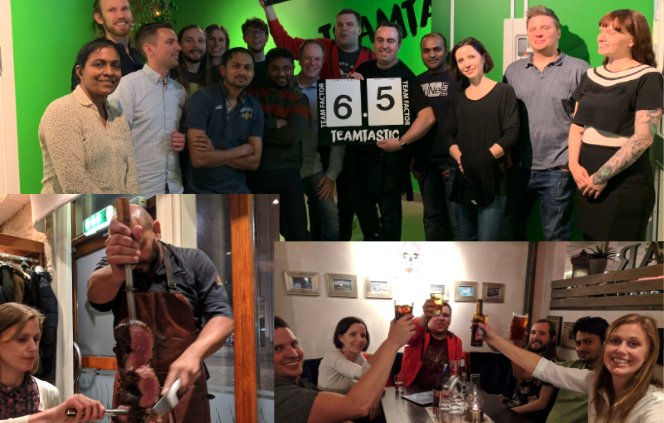Awesome Teams build Awesome Products
As a consultant working for a large company I get to help seed many teams in many industries and over the last few years I’ve started to notice a few patterns that can help you on this journey. I am a big believer in Teams. Strong teams are the bedrock of any digital transformation adventure. Creating autonomy with a culture of ownership is critical to succeeding. Here are a few of my top tips for building Awesome Teams around Awesome Products:
- The Space – Does this look like your work space?
Traditional cubicles or fixed desk workspaces can often dampen collaboration. A great space is open, transparent and customisable. The space should evolve with the needs of the team. Taking spaces like the one above and adding in moveable walls plus big screens on wheels will help radiate information to anyone who comes by. The best workspaces I’ve been in were completely customizable, everything was on wheels even the plants! This meant our team could restructure as our week needed. Some work we did needed everyone around a large table and screens whereas other times we worked in pairs so being able to share a desk and monitor was key.
- Social Contracts – An essential tool in any facilitators kit bag for promoting self governance, inclusivity and psychological sa fety. This practice is an absolute must for any team starting off, it is a simple tool that allows us to codify behaviours upfront and hold each other accountable to them. Great teams keep this on display along with their team name and logo. Team identity is such an important tenet of high performing teams, you can learn more about this practice or others on https://openpracticelibrary.com/
- Share responsibility – Build a cross functional team that shares responsibility but is individually accountable. Practices like Pair Programming and Mob Programming are good tools to help coach younger team members as well as deliver complex solutions with the best minds focused on one problem. Rotating roles is a great way to ensure the teams can cover each other and become predictable even if this means coming out of your comfort zone. I coached a team that had one tester who was struggling to keep up the pace of the development, instead of leaving this member of the team behind one of the backend engineers rolled up his sleeves to help out and learn to do some front end testing. This comradery is great because while we might not want to do the difficult task in this sprint (testing), we know by helping others they’ll likely do the same for us in the future.
- Banter – As a team it’s important to be able to take the time to socialise together. For me that could mean a lunch we share each week or getting some time away from the office to play a game. My team likes to do our retrospectives in the pub or sometimes over a delicious breakfast before we do our planning. We often have social playlists going where the team can add songs or vote on what’s next in the queue – this is a great way to find out what guilty pleasures are into! Building connections with one another outside of a professional context will positively impact the team morale. Higher performing teams tend to be happier at their jobs.
If you’re interested in finding out more about what we do at Red Hat or the Open Innovation Labs, come and find us by the stand.
By: Red Hat


